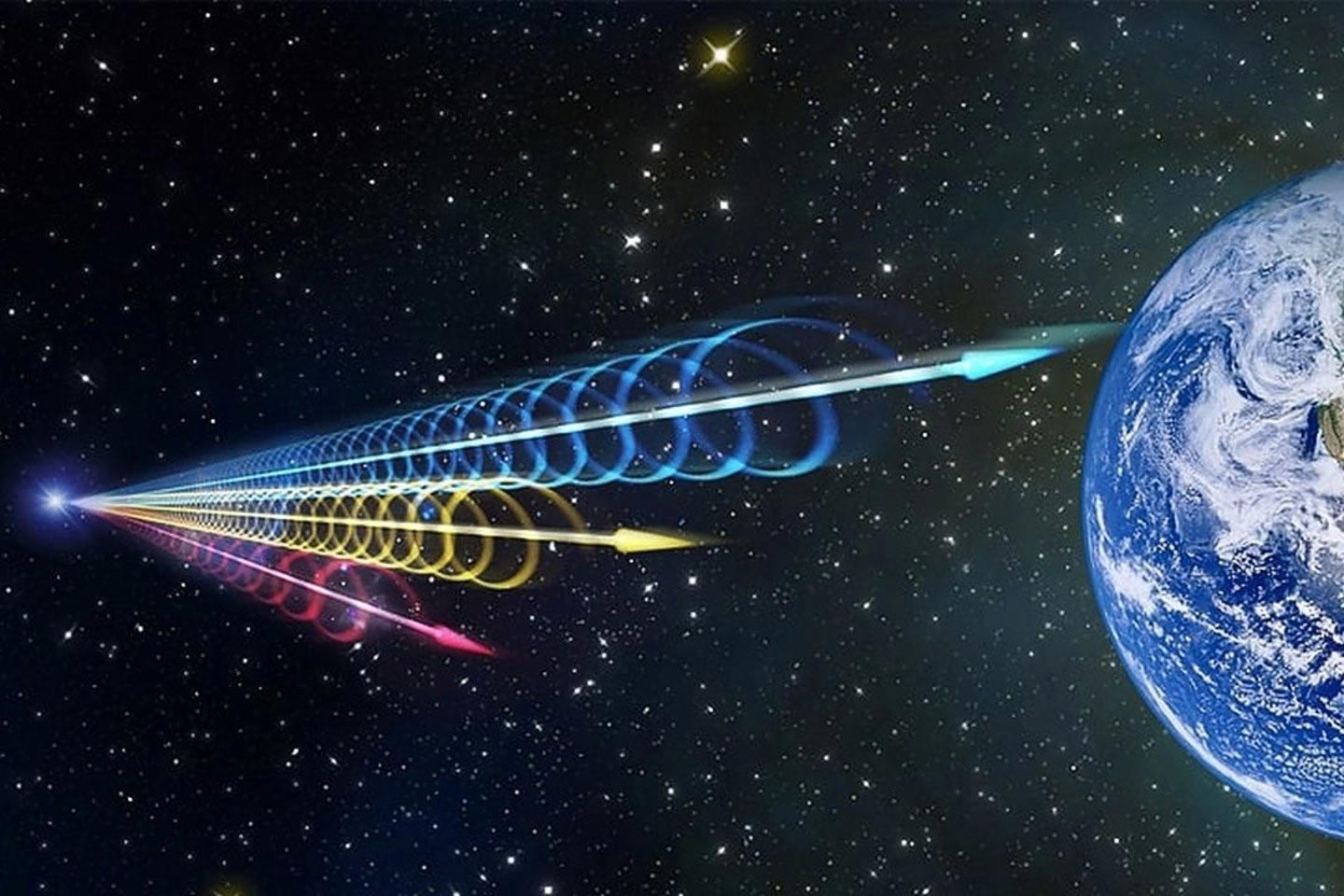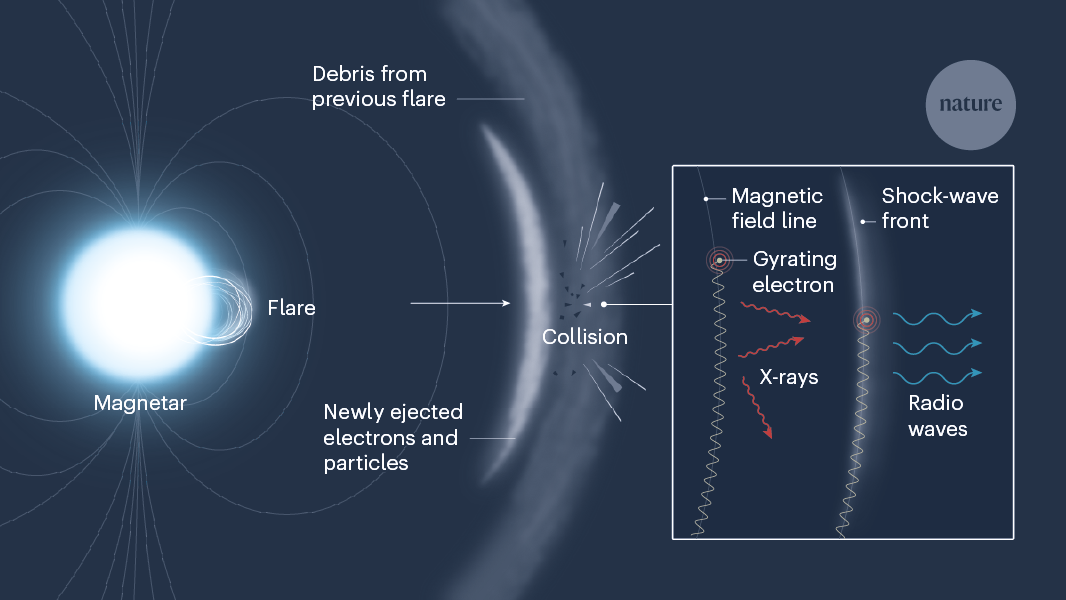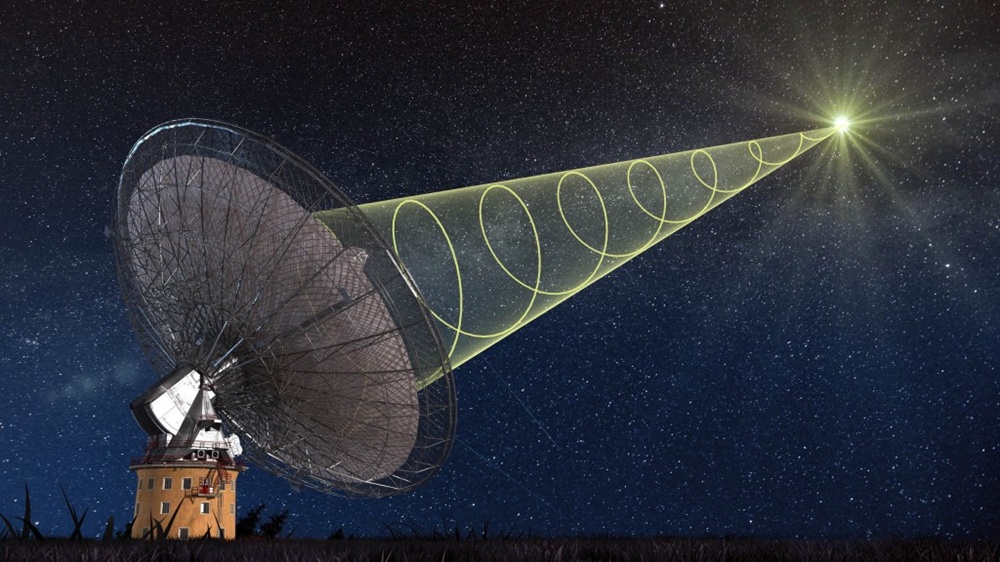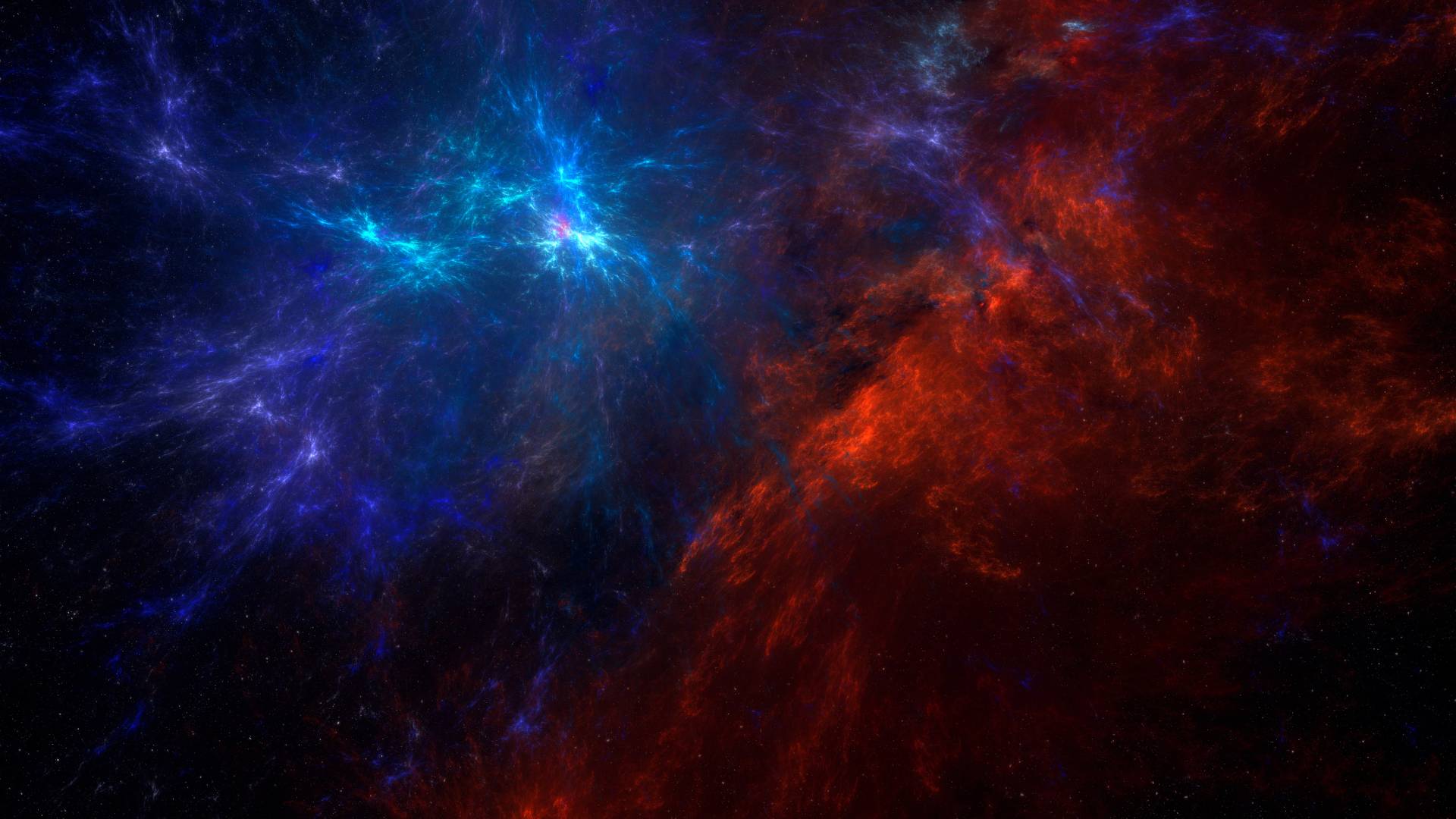In the vastness of the cosmos, few phenomena have captured the intrigue of scientists and space enthusiasts like Fast Radio Bursts (FRBs). These fleeting, high-energy bursts of radio waves originate from deep space, often lasting mere milliseconds but packing an energy punch comparable to the Sun’s output in a day. Despite their brevity, FRBs have sparked intense curiosity and speculation about their origins, mechanisms, and potential implications. Stay with spaceyv
What Are Fast Radio Bursts?
FRBs are intense pulses of radio waves that seem to come from outside the Milky Way galaxy.
- Characteristics:
- Duration: Milliseconds.
- Intensity: Exceptionally bright for their short duration.
- Frequency Range: Typically observed in the gigahertz (GHz) range.
The first FRB, known as the “Lorimer Burst,” was discovered in 2007 by Duncan Lorimer and his student while analyzing archival data from the Parkes Observatory in Australia. Since then, hundreds more have been detected, with some repeating and others appearing as one-off events.

Where Do FRBs Come From?
Pinpointing the origins of FRBs has been a major challenge for astronomers. However, advancements in telescope technology and observations have provided clues:
- Extragalactic Origins: Most FRBs are traced back to galaxies billions of light-years away, suggesting they are not local phenomena.
- Repeating FRBs: Some sources, like FRB 121102, have emitted multiple bursts, helping astronomers identify specific host galaxies.
Theories About the Origins of FRBs
The origin of Fast Radio Bursts (FRBs) is one of the most debated topics in modern astrophysics. These millisecond-long, high-energy bursts of radio waves originate from deep space, yet their exact cause remains unclear. Over the years, scientists have proposed several theories to explain their mysterious origins. Here are some of the most prominent hypotheses:
1. Magnetars
- What They Are: Magnetars are neutron stars with incredibly strong magnetic fields, capable of producing intense bursts of energy.
- How They Relate to FRBs:
- Magnetars occasionally release massive amounts of energy in the form of radio waves, aligning with the characteristics of FRBs.
- A specific event in 2020 (FRB 200428) was linked to a known magnetar in the Milky Way, providing strong evidence of this connection.
- Why This Theory Is Plausible:
- Their extreme conditions and energy output match the scale of energy observed in FRBs.
2. Black Holes
- What They Are: Black holes are regions in space with gravitational pull so strong that nothing, not even light, can escape.
- How They Relate to FRBs:
- Some scientists hypothesize that interactions between black holes and surrounding matter could generate FRBs.
- Possible scenarios include:
- A neutron star spiraling into a black hole.
- Magnetic reconnections near a black hole’s event horizon.
- Why This Theory Is Plausible:
- Black holes are known to produce high-energy phenomena, making them viable candidates for the origin of FRBs.
3. Colliding Neutron Stars
- What They Are: Neutron stars are the remnants of massive stars that have collapsed under their gravity.
- How They Relate to FRBs:
- When two neutron stars collide, the event releases an enormous amount of energy, which might manifest as an FRB.
- Such collisions are also thought to produce gravitational waves, making this theory testable through multi-messenger astronomy.
- Why This Theory Is Plausible:
- The immense energy released during these collisions aligns with the intensity of FRBs.
4. Supernovae and Hypernovae
- What They Are:
- A supernova occurs when a star explodes at the end of its life cycle.
- A hypernova is an even more powerful explosion of a massive star.
- How They Relate to FRBs:
- These explosions might generate intense radio bursts as they eject material into space.
- The remnants of these explosions, like a newly formed magnetar, could also emit FRBs.
- Why This Theory Is Plausible:
- Supernovae and hypernovae are already known to produce other types of bursts, such as gamma-ray bursts.
5. Pulsar-Like Emissions
- What They Are: Pulsars are rapidly rotating neutron stars that emit beams of electromagnetic radiation.
- How They Relate to FRBs:
- Some scientists suggest that FRBs could be highly energetic pulsar emissions.
- The periodic nature of some repeating FRBs resembles pulsar behavior.
- Why This Theory Is Plausible:
- Pulsars are already known to emit strong radio signals, so they could produce FRBs under extreme conditions.
6. Cosmic Strings
- What They Are: Hypothetical one-dimensional defects in the fabric of spacetime, thought to form during the early universe.
- How They Relate to FRBs:
- Collisions or interactions between cosmic strings might produce bursts of radio waves.
- This theory ties FRBs to fundamental physics, offering a glimpse into the universe’s early moments.
- Why This Theory Is Plausible:
- While speculative, cosmic strings could release massive energy bursts compatible with FRBs.
7. Alien Technology (Speculative)
- What It Suggests:
- FRBs might be signals from advanced extraterrestrial civilizations.
- Some researchers hypothesize they could be intentional transmissions or byproducts of alien technology, such as propulsion systems for interstellar travel.
- Why This Theory Is Plausible:
- The highly structured, repeating nature of some FRBs raises questions about whether they could have artificial origins.
- Challenges:
- No direct evidence supports this claim, making it purely speculative.

While no single theory fully explains all observed FRBs, each hypothesis offers valuable insights into the extreme and energetic processes that occur in the universe. Ongoing advancements in telescope technology, data analysis, and multi-messenger astronomy are bringing us closer to understanding these enigmatic cosmic signals. Whether their origins lie in magnetars, black holes, or even something entirely unknown, FRBs continue to push the boundaries of our knowledge about the cosmos.
Why Are FRBs Important?
FRBs offer a unique window into the workings of the universe:
- Cosmic Mapping:
- The dispersion of radio waves in FRBs helps measure the distribution of matter in the universe.
- Magnetar Studies:
- Understanding FRBs contributes to our knowledge of neutron stars and their extreme conditions.
- Probing Fundamental Physics:
- FRBs test theories about space, time, and the universe’s structure.
Recent Discoveries and Advancements
- CHIME Telescope:
- The Canadian Hydrogen Intensity Mapping Experiment (CHIME) has been instrumental in detecting FRBs, cataloging hundreds since its launch.
- Localizing FRBs:
- Precise localization has led to identifying host galaxies, shedding light on their origins.
- Repeating Patterns:
- Some FRBs exhibit periodic repetition, hinting at structured processes behind their emissions.
Challenges in Studying FRBs
- Ephemeral Nature:
- Their short duration makes them difficult to detect and study.
- Distant Origins:
- FRBs often originate billions of light-years away, complicating efforts to trace their source.
- Interference:
- Terrestrial signals can mimic FRBs, requiring rigorous verification to distinguish genuine detections.
The Future of FRB Research
Advancements in technology and observational techniques are paving the way for breakthroughs in understanding FRBs:
- Next-Generation Telescopes:
- Projects like the Square Kilometer Array (SKA) will vastly improve our ability to detect and study FRBs.
- Global Collaboration:
- Coordinated efforts between observatories worldwide are crucial for capturing these fleeting signals.
- Machine Learning:
- AI and machine learning are increasingly used to analyze vast datasets and identify FRBs in real-time.
Conclusion
The mystery of Fast Radio Bursts continues to captivate astronomers and ignite scientific curiosity. These enigmatic signals from deep space not only challenge our understanding of the universe but also push the boundaries of observational astronomy. With each new discovery, FRBs unravel secrets about the cosmos, inspiring awe and expanding humanity’s quest to understand the unknown.
Resources
NASA Science: Fast Radio Bursts
https://science.nasa.gov/astrophysics/focus-areas/fast-radio-bursts
Harvard-Smithsonian Center for Astrophysics: Theories Behind FRBs



